Both Poison Ivy (Toxicodendron radicans) and Poison Hemlock (Conium maculatum) are considered dangerous to humans, especially children. Therefore, it’s recommended to remove the poisonous pair.
Of course, this is much easier said than done. So, as Sun Tzu said: “Know the enemy.”
Characteristics of Poison Ivy
Poison Ivy isn’t technically “poisonous”. Instead, it has a particularly nasty oil called Urushiol, which is found in the leaves, stem and roots. Just brushing against the leaves can deposit the sticky oil on your skin, and a serious rash or blisters will develop very quickly.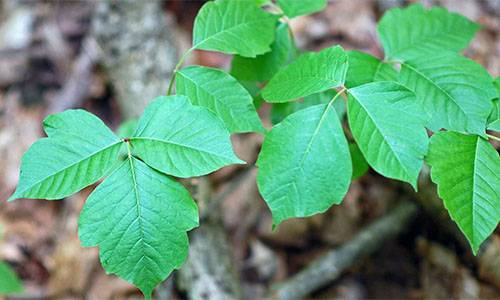 As the name implies, it has the typical habit of a vine when mature, and sadly, it’s a perennial one. It has hairy, aerial roots to help it attach itself as it climbs, which means older vines can be difficult to dislodge.
As the name implies, it has the typical habit of a vine when mature, and sadly, it’s a perennial one. It has hairy, aerial roots to help it attach itself as it climbs, which means older vines can be difficult to dislodge.
It has leaves in groups of three, white berries, and aerial roots that look hairy. It’s also deciduous and its seeds are viable for 5 to 6 years.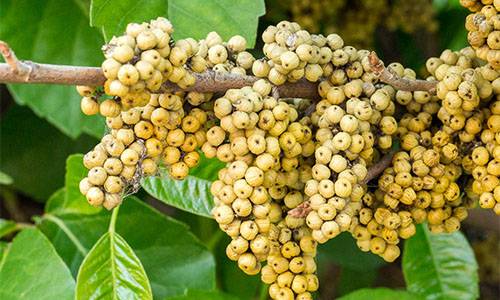
Characteristics of Poison Hemlock
Poison Hemlock is a biennial plant and regenerates from seed. In ideal conditions however, it can act more like a perennial. It is also a prolific seeder, but the good news is that the seeds only remain viable for 2 or 3 years.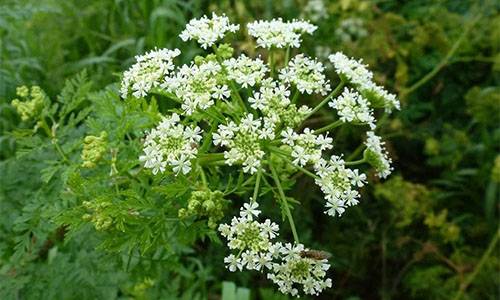 Mature plants look similar to carrots and parsnips, except that hemlock has pointed leaves, purple spots along the stems, and isn’t hairy. They can grow from 3 to 10-feet tall.
Mature plants look similar to carrots and parsnips, except that hemlock has pointed leaves, purple spots along the stems, and isn’t hairy. They can grow from 3 to 10-feet tall.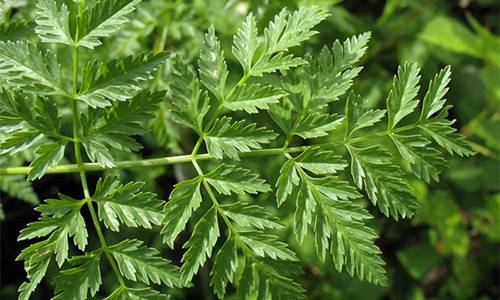 Poison Hemlock is a notoriously poisonous plant due to the alkaloids present in it, and the entire plant is poisonous if ingested. Poisoning can also occur from contact via open cuts, or via the eyes. In some people, handling hemlock can cause a skin irritation and even a serious rash.
Poison Hemlock is a notoriously poisonous plant due to the alkaloids present in it, and the entire plant is poisonous if ingested. Poisoning can also occur from contact via open cuts, or via the eyes. In some people, handling hemlock can cause a skin irritation and even a serious rash.
Related: How To Tell The Difference Between The Healing “Queen Anne’s Lace” And Deadly “Hemlock”
Preparation for Removal
So, how do you eradicate a 6-foot tall poisonous herb? Or a vine that causes blisters on contact? The answer is: very carefully!
The first step is appropriate clothing. Long pants, a long-sleeved shirt, thick gloves (preferably water-proof) and closed shoes.
The next step is to choose your weapons wisely. A long-handled shovel, a rake and a pair of secateurs are my go-to tools. Long handled tools allow you to keep a relatively safe distance from the plants which minimizes contact (and when you’re only 5 foot 6, it certainly helps). If you are dealing with a few scattered plants, then suiting up and digging them out manually is the best option. This is easier when the soil is moist, and best done before any seeds appear.
If you are dealing with a few scattered plants, then suiting up and digging them out manually is the best option. This is easier when the soil is moist, and best done before any seeds appear.
Make sure you remove everything (leaves, stems and roots) and don’t put them in the compost. Put them in a bag and throw them in the regular trash.
Related: 18 Vintage Homesteading Tools to Search for at Garage Sales
Removal of Poison Ivy
It’s possible to cut the vine at the base and leave the upper part of the plant to die off – just be careful when you eventually remove it, since even dead plants contain urushiol and will still cause a rash.
Now for the roots. You can either dig them out, or you can out-compete the ivy by maintaining a thick, short lawn. Another option for the roots is smothering (read below for details).
In most cases, only humans are irritated by the plant, and many animals, including domesticated ones such as goats and rabbits eat it, especially the young shoots. You can even hire a goat. But don’t touch any animal that has been in contact with poison ivy since the oil will be present on their fur.
Removal of Poison Hemlock
For tall plants, I minimize contact by chopping off the top of the plant with either my shovel or secateurs first, leaving about a foot at the base to help with digging out the tap roots (or read below about smothering).
For scattered plants, once the mature plants are completely removed (don’t forget to dig up that pesky tap root), then it’s usually just a matter of re-visiting the site and keeping a sharp eye open for the juvenile plants for the next 2 or 3 years.
Thankfully the seed dispersal is low, so it’s unlikely to be very far from where you dug up the parent plant. The juvenile plants are much easier to remove with a weeding tool, and you can spray very young seedlings with a vinegar solution.
Related: 8 Edible Backyard Plants And Their Poisonous Lookalikes
Decrease the PH and Increase the Shade
Poison Hemlock has a hard time establishing in acidic soils, especially under heavy shade. Ideally you want to keep soil disturbance to a minimum, so once the adult plants have been removed, try planting an acid loving perennial and dropping the pH by watering it in with a vinegar solution. Avoid any of the solution touching the leaves.
The drop in the pH may last for a month or up to a year; depending on the soil type and rainfall, so a cheap pH meter is always a great investment.
Biological Control
The hemlock moth (Agonopterix alstroemeriana) is the only insect that can help with controlling large infestations of poison hemlock. The downside is that they can be expensive to buy, but for around $100 you can have a crew of tiny employees doing the hard work for you.
Smothering Method for Poison Ivy and Poison Hemlock
One low cost method that can be utilized for any weed is smothering. Lawn clippings, wood chips, straw, gravel or even other weeds can be used. Anything to stop the sunlight from germinating the seeds or stimulating re-growth.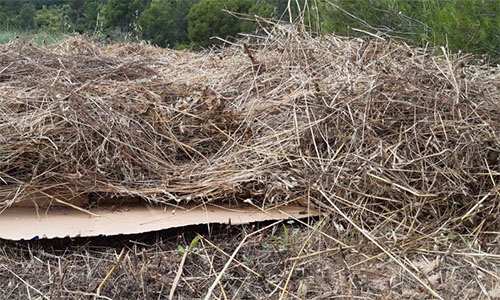 Some hints to maximize the effectiveness of smothering are:
Some hints to maximize the effectiveness of smothering are:
- Remove as much of the weed as possible first. The less leaves it has, the less chance it has to keep growing. A weed eater (especially one with a blade) can be an efficient way to do this, just make sure you wear a full-face mask and eye protection.
- A few sheets of overlapping newspaper or cardboard should be laid down first, with the smothering materials over the top.
- Completely cover the infested area. Too much is better than not enough.
- Make sure the smothering layer is at least 4 inches at all times. The layer will settle and start breaking down, so aim for 6 inches when initially laying down a smothering layer.
- Keep the area smothered for as long as the seeds remain viable.
How Not to Remove Poison Ivy and Poison Hemlock
It is not recommended to burn either of these poisonous plants. The toxins in the plant are released into the smoke and inhalation can cause severe respiratory problems.
Household vinegar solutions desiccate the leaves of all plants, but it has almost no effect on established roots. Hence why it won’t actually kill mature plants. For this reason, a vinegar solution will only be effective at killing very young seedlings that don’t have established roots.
You may also like:
 Edibility Test: Find Out Which Backyard Weeds are Edible
Edibility Test: Find Out Which Backyard Weeds are Edible
This Homemade Device Can Power Up Your Entire House 7 Days in a Row (Video)
15 Common Wild Plants You Never Thought Were Edible
How To Make Sauerkraut – The Most Effective Probiotic
10 Reasons Why You Need to Make Room for the God of Fungi in Your Backyard

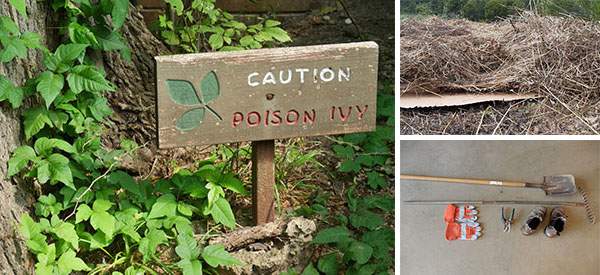






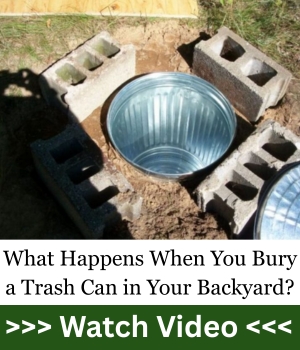






However when the SHTF, these plants along a fence line would help deter looters/invaders. Briars are another vine to cultivate along fence lines in that situation.
although that might sound effective, while when SHTF I don’t think looters and invaders are not going to be bothered to avoid the ivy. They will be in survival mode and if they know food or shelter is beyond that vine, they will push through.
I’m sure the folks who gave us multi floral rose, English sparrows, and nutrias all thought it was a good idea too. Gators in the moat is neat until the draw bridge breaks 🙂
I thought the same thing. It would also keep unsupervised kids out as well.
THANK YOU FOR SHARING THIS INFORMATION
The only one I for sure know I have is Poison Ivy. And I am lucky to have inherited not being affected by it. I mostly let it grow in the woodlands since it is protection for the rabbits as well as food for them and the deer. But if you have company you need to have it gone. I pull it throw it in a pile and burn it. And burning means NO WIND. My neighbors are far enough way that I may not need to worry but I do. Do not stand in the smoke, you don’t need the oil on your clothes. The smoke may bother your eyes and/or your throat. Also It has a aroma when the plant is smashed that is identifiable.
As a kid I never was affected by it. But something changed as i grew older and it now affects me.
We have poison oak and sumac here, too.
As previously mentioned, they can be a useful deterrent if would-be looters recognize the plants.
Secateurs is a new-to-me word. We always just called them grass clippers.
I used to be unaffected by poison ivy. My doctor told me it was a matter of time like filling a teacup one drop at a time and one day which happened this year it hit me like a ton of bricks. I got into some in my backyard and OH LORD was I ever sorry. That stuff is vicious.
As a kid, teenager young adult and even middle-aged adult, I could touch or brush up against poison ivy and have no issues. When I was about age 50, I pulled weeds around the yard like usual, including poison ivy, and contracted a HORRIBLE case of a poison ivy rash. I got it good. I looked like a leper! So, end of immunity for me. Now I’m VERY susceptible. It’s pretty depressing because we live in the woods and it’s everywhere.
Learned a new word today. I had never heard hand clippers called secateurs. Had to look it up. I wonder if that is a regional word for them. It is French in origin, so perhaps, northeastern U.S. We call them bypass hand shears out here on the left coast. Or anvil hand shears depending upon the construction.
There is a survivalist out here in the PDRK who eats the young leaves of poison oak in the spring to give himself immunity from the plant later in the year. He claims that is how the Chumash people, early settlers in California, made themselves immune to it. They made baskets from the poison oak vines. When the foreign invaders used the baskets they developed the rash and sores associated with poison oak.
Secateurs is a new one on me too, but I have heard the expression suffering succotash. I wonder if I can find some of those baskets to send to China.
One of my 1st jobs was working for a gay Mexican-American arborist who learned to speak English watching T.V., the old Sherlock Holmes movies starring Basil Rathbone were favorites of his so he spoke with a refined British accent. He called pruners secateurs, but until now I have never known anyone else to use the word. Still commonly used by English gardeners.
Corona bypass shears are by far the best secateurs made, made in USA, Corona, California.
For eradication of weeds I use salt, either rock salt picking salt, any of the cheap stuff will do.
After chopping down the area I’ll give it spray with the water hose, dose it good with salt and then lightly water again.
I don’t use that “weed killer” stuff as I am on a well and septic tank system and I do not want glyphosate leaching into my water supply or near my gardens.
Does the salt treatment actually kill the poison ivy? How many times do you repeat it? Even if that only kills the above ground growth, is that good for the season? Worth trying for me, as the ivy keeps coming up under every tree, every year or two.
I’ve used salt, vinegar and dish soap but in my opinion, which I wouldn’t put a whole lot of credence in, that remedy is only seasonal. With all the weeds in my little plot of heaven it is hard to keep track whether the weed this year is brand new or a left-over from last year that only died for one season.
The salt, vinegar and dish soap does do a number for at least one season.
Perhaps if I increased the salt content from one cup to two cups it might have a more lasting effect. When the Romans were really p.o.d at somebody they spread salt over everything. If I recall second year Latin correctly the last line of the Punic Wars is along the lines of “They sowed salt over all the fields.” The only line I really remember from two years of Latin is “Que laborimus sunt.” “What a job that was,” speaking of cleaning out the Augean Stables.
The formula I use is one gallon of vinegar, one cup of salt, ten drops of dish detergent. The dish detergent is a surfactant that cuts the protective oily coating that some plants, especially poison ivy/poison oak have that protects the leaves and stems.
If I were mixing up a batch specifically for poison oak/poison ivy, I would up the dish soap and I think I would also up the salt. The vinegar is an acid and that is what kills the present growth after the dish soap has done its job. I think the salt is the long term killer. Inasmuch as I am neither a botanist, an agriculturist nor a chemist, you are free to put as much credence in the above post as you feel inclined.
On the other hand, I’m with Ivy Mike. You really can’t beat Round-Up. Jury verdicts only prove that the plaintiffs had better lawyers than the defendants. You haven’t lived until you have sat through weeks of “expert” testimony in court. What would you like to prove? I can find an expert who will testify to whatever weird science you want to try to prove.
I had an attorney tell me that he wasn’t a lawyer seeking truth and justice, he was an impresario putting on a fantasy play. I think he had become somewhat jaded by the whole process which is also why I quit a fairly decent paying profession to own a printing company. It was like politics. Both sides didn’t give a damn about truth and justice. Neither did the judge. It was a keep-attorneys-busy-so-they -won’t-run-for-political-office effort.
Oops, looks like I slipped off topic again into a political rant. Sorry about that folks. The absolute Chinese fire drill that is our current national scene is making me despondent.
Chinese fire drill is an old Marine Corps politically incorrect term for a scenario that is SNAFU and FUBAR all at once.
Left over from the old China Marines, some of whom I had the honor of serving with.
Yep, ‘Chinese fire drills’ are things I definitely recall from my time in the USMC. I’m with you on the relationship to our current circumstances!
@LEAH,
Yes, you will have to repeat the salting every so often, whenever you see new growth will do.
Ow, ooch, ouch, organic persons go ahead and throw stones at me, but if you have a patch of poison ivy the biggest favor you’ll ever do yourself is spray it with Roundup. Get it in a spray bottle that gives you the choice of foam, it comes out low volume in a foam and you can carefully spray each leaf w/o hurting other plants, it kills the p.i. forever. The active ingredient in Roundup, Glyphosphate, is the most widely used agricultural chemical on Earth, and has been for decades. The greatest mass experiment ever. California juries aside, we’re all still here.
Why would you want to kill Water Hemlock? Why not teach your ignorant children that it is poison and not to eat it?
I would love to use Roundup . But it will cause cancer . And I don’t want that . Is there any thing else will kill it . I have a lot of it in my yard. I have all most acre of land.
Oh, Irene, please don’t be misled by whatever verdict a jury in California said. That probably is the farthest you can get from real life in this world. Jury verdicts in federal court and especially in California courts have as much relevance to real life as Alice In Wonderland. In fact, having to choose which is more real life, I would have to choose Alice In Wonderland as opposed to what goes on in California courts, both federal and state.
Why kill water hemlock? Because it spreads quickly, ends up in the pasture, yard and everywhere else. Because it is very poisonous it gets eradicated on my property. I appreciate weed killer, but use it only on pain in the rear weeds like poison ivy, hemlock, poke, and certain weeds that have root systems difficult to dig up.
I would love to use Roundup . But it will cause cancer . And I don’t want that . Is there any thing else will kill it . I have a lot of it in my yard. I have all most acre of land.
Irene, you’d have to use thousands of gallons of Roundup over the course of decades to be concerned about cancer. Go ahead and use it, you’ll be fine.
I’m in California too (for now), and left coast chuck is right. There’s a reason that Roundup is made by a company in Missouri but the lawsuit was filed in California.
Monsanto happily produced napalm and Agent Orange, two chemicals that have killed untold thousands of people and badly injured many more. The people running Monsanto were every bit as evil as the famous murderous dictators we all like to name, Monsanto was just quieter about it all. There were corporate memos inside Monsanto that seem to say they were going to do all they could to suppress any negative studies on Roundup, but there was never a negative study. The stuff is safe. Since it was introduced in the 60s just about all ripe grain and cotton crops have been sprayed with it to dry the leaves making mechanical harvest more efficient, now Roundup resistant GMO cotton and corn are sprayed through the growing season. The farmers in my area have just finished treating their non GMO grain sorghum, it’s an eerie shade of brown. Fields are sprayed with it a month before planting to kill any existing weeds. City, county, and State governments spray it everywhere. The landscape industry sprays what governments miss. Homeowners love it. Sales are around 10 billion dollars annually.
I’ve used it twice in the last 20 years, both times to wipe out poison ivy.
For small Poison Ivy plants ( I’ll get 20 to 25 around the edges of my yard a year) I just pull them them up by the roots with a gloved hand and a plastic grocery bag. Put the gloved hand in the grocery bag, pull up the small plants (usually no more the 6 to 8″ tall) and then pull the grocery bag wrong side out around the the plant. Tie up bag and put it in the garbage.
If in the process of getting rid of poison ivy you get a rash, use Zanfel. Expenxive, but worth it. I am highly allergic and this stuff wipes it out by cleansing the oils completely from your skin.
I would think about sending apple, pomegranate, and prickly pear cacti seeds (even grow in Michigan) to orphanages. I.e.:
ORPHANAGE CONGO
Local address:
Kilomoni, Uvira District
Democratic Republic of the Congo
Contact by mail:
PO Box 7213
Bujumbura, Burundi
Simple mail letter is around 5$ don’t know and some seeds are so small to fit. Many kids need help and shouldn’t starve!
I remember (1970) my Grandmother would pour gasoline from the jug ment for the lawn mower on the root base where the ivy started from. It would be dead in a few days.
Bleach kills poison ivy.